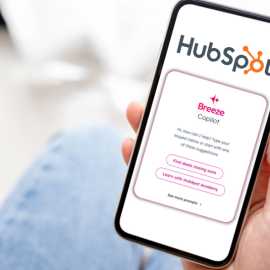Your company is producing content consistently, you’re getting some reach and engagement, but you have no idea which piece of content generated revenue for your company, and which didn’t.
Imagine if you knew EXACTLY which pieces of content resulted in EXACTLY how much money. How would this impact you and your team?
You’d go from being a business that produces content sometimes because you think it has a positive impact on the bottom line to a business that produces very specific pieces of content weekly because you know which pieces will generate revenue and which won’t.
In this article, we’re going to cover:
The Impact that Content ROI has had on our Business
Once we discovered how to measure ROI from specific pieces of content, we knew everything was about to change. And when we saw it change with our own eyes, we knew we had to tell the world. And so, we’re releasing this article, to show you what we wished we knew years ago.
After understanding how to measure ROI from specific pieces of content, we stopped writing about the stuff that never generated revenue and we doubled down on the stuff that worked for us.
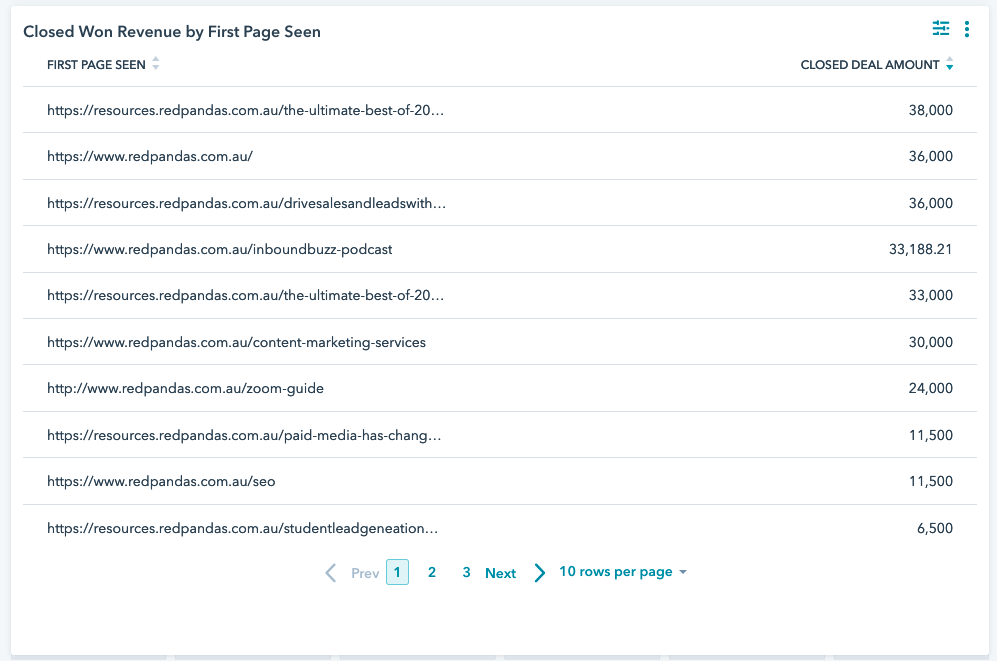
For instance, we learnt that a webinar generated close to forty thousand dollars for our business. This led us to invest in developing more webinars for a specific target market. This “marketing expense” quickly transformed into a marketing investment because we knew that we’d generate similar or higher revenue figures than previously because we can trust the numbers.
When marketing becomes an investment in this way, your business changes. You go from spending money on marketing because you’re told it works to spending money on very specific marketing activities which actively generate real revenue for your business on a consistent basis.
So, how do we actually go about setting up our business to measure ROI from content pieces?
How to Attribute ROI from Your Content Marketing Efforts
HubSpot is definitely the number one tool for ease and effectiveness when building Content ROI for your business, however, if you don’t want to HubSpot, then here are some fantastic HubSpot alternatives that you can check out. If you are new to HubSpot and are interested in learning more about the platform, we recommend checking out our Ultimate HubSpot Guide and our HubSpot Pricing Guide articles. Whether you use HubSpot or another software, you should be able to utilise what I am about to show you for your business.
Pre-requisites: What You Need to Build Your Content ROI Measurement Framework
In order to actually be able to build a system that measures ROI from specific pieces of content there are certain things that you will need to have in place first. In particular, you will need:
- Unified marketing and sales system
- Tracking code
- Capturing contacts with HubSpot forms
- Deal tracking
Unified Marketing and Sales System
It’s absolutely essential for your marketing and sales systems to sit in the same place, regardless of what software you plan on using to measure ROI from content. Having this unification allows you to attribute closed sales deals to specific marketing activities, such as specific blog posts.
Tracking Code
You will need to ensure you have the HubSpot tracking code installed on your website. This attaches a cookie to any user that visits your website. This is very important because this follows the user online and tracks them which is essential to tracking when a deal associated to the same user who read a specific article has been closed. In other words, if a deal is closed, we want to know which website pages they visited and which blogs they read on our website, and the first step to doing that is having tracking code installed.
Capturing Contacts with HubSpot Forms
Capturing contacts with HubSpot forms is the next important piece to ensure you have working. Remember the browser cookie we spoke about in the last section?
Well, when we capture a user’s details with HubSpot forms, what we’re doing is attaching that browser cookie to that specific contact record. In other words, we go from just knowing that a particular user with a particular IP address looked at a specific page on our website to knowing that the user whose first name is John and last name is Smith visited a specific page on our website. This step is CRUCIAL to have in place before we try to measure ROI on specific pieces of content.
Outside of measuring content ROI for your business, this specific ability is extremely valuable. Imagine knowing that a particular person visited your pricing page and key service page and knowing that person’s phone number and email address. You wouldn’t only have access to call an interested prospect, but you’d have access to call a prospect who is interested in a particular service and a particular topic of interest (in this case, pricing). This can help you increase your sales close rates and shorten the sales cycle, just by using this information. As you can see, implementing these steps not only help you measure content ROI but can also help you improve other areas of your business, which is why we recommend using HubSpot for your business.
Deal Tracking
The final thing you need to ensure you have right before moving forward with measuring ROI on specific pieces of content is that you’re tracking deals in HubSpot. This is important because it allows HubSpot to associate contacts to closed won deals. In other words, when a contact visits a page on your website and a deal associated to that contact has been closed and revenue won, we are able to see which pages of our website that contact visited, including the first and last pages they visited, which gives us an indication on what drove this user to purchase. In this way, we can truly measure ROI from specific pieces of content on our website.
How To Guide on Measuring ROI from Specific Pieces of Content
Once you have the above set up, you can follow the below steps to start measuring ROI from specific pieces of content.
1.Go to the new HubSpot reports builder tool.
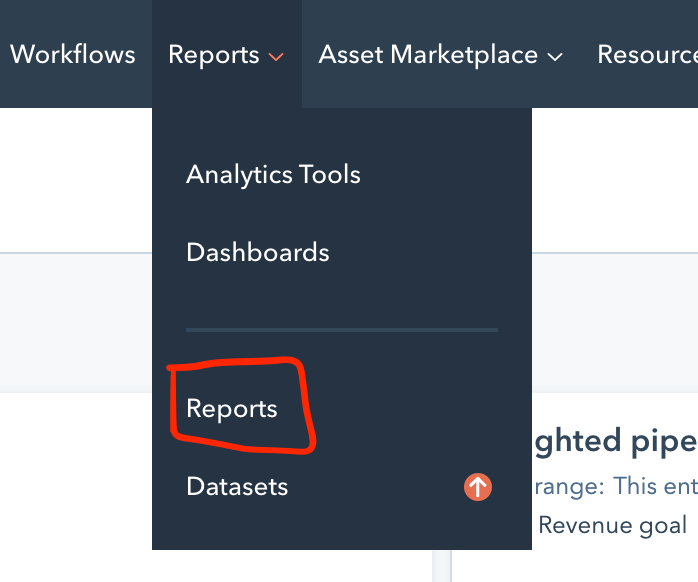
2. Click on Custom Report Builder.
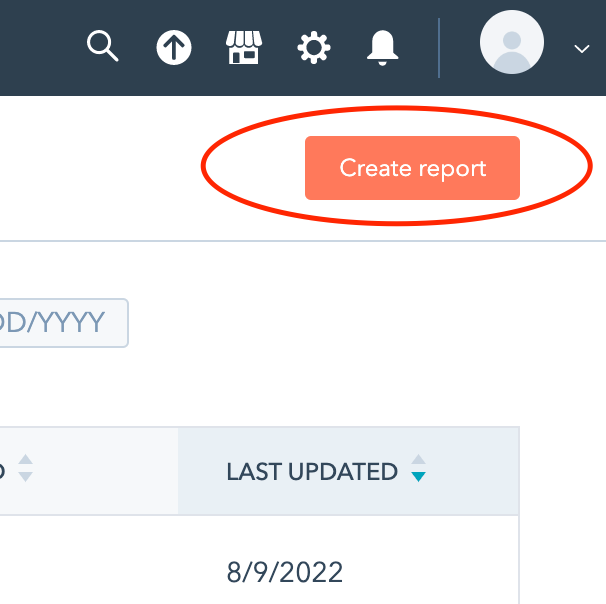
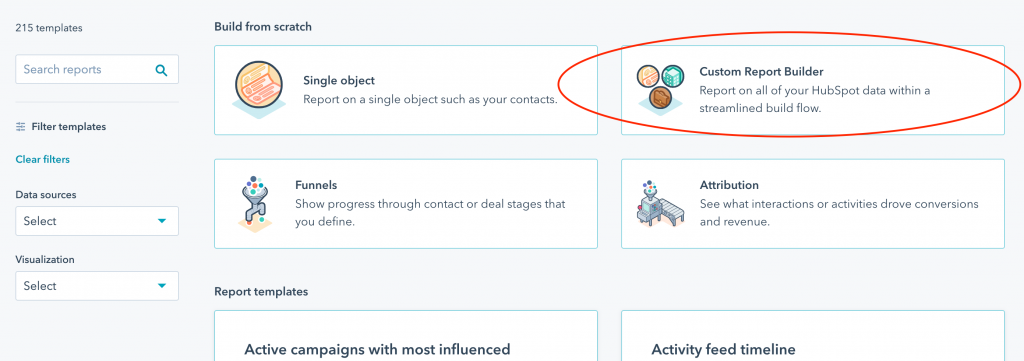
3. In the CRM section, click on Contacts and Deals and then click Next.
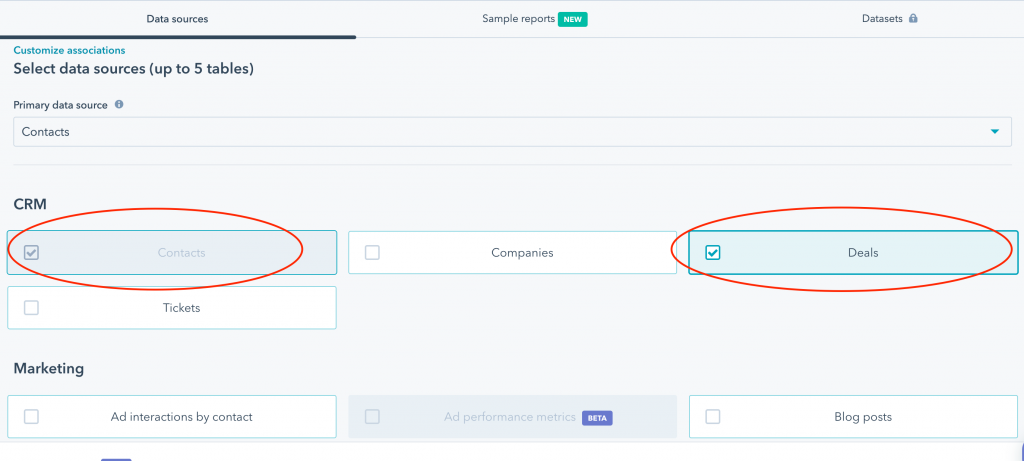
4. Select the Table View.

5. In the left data sources search field, look for “First page seen” and drag that into the columns section. Don’t worry too much if the data looks weird and doesn’t make too much sense at this point.

6. Look for “Closed Deal Amount” and drag that into columns.

7. Click on Filters.

8. Turn on “First page seen is known” and “Deal closed amount is known”.
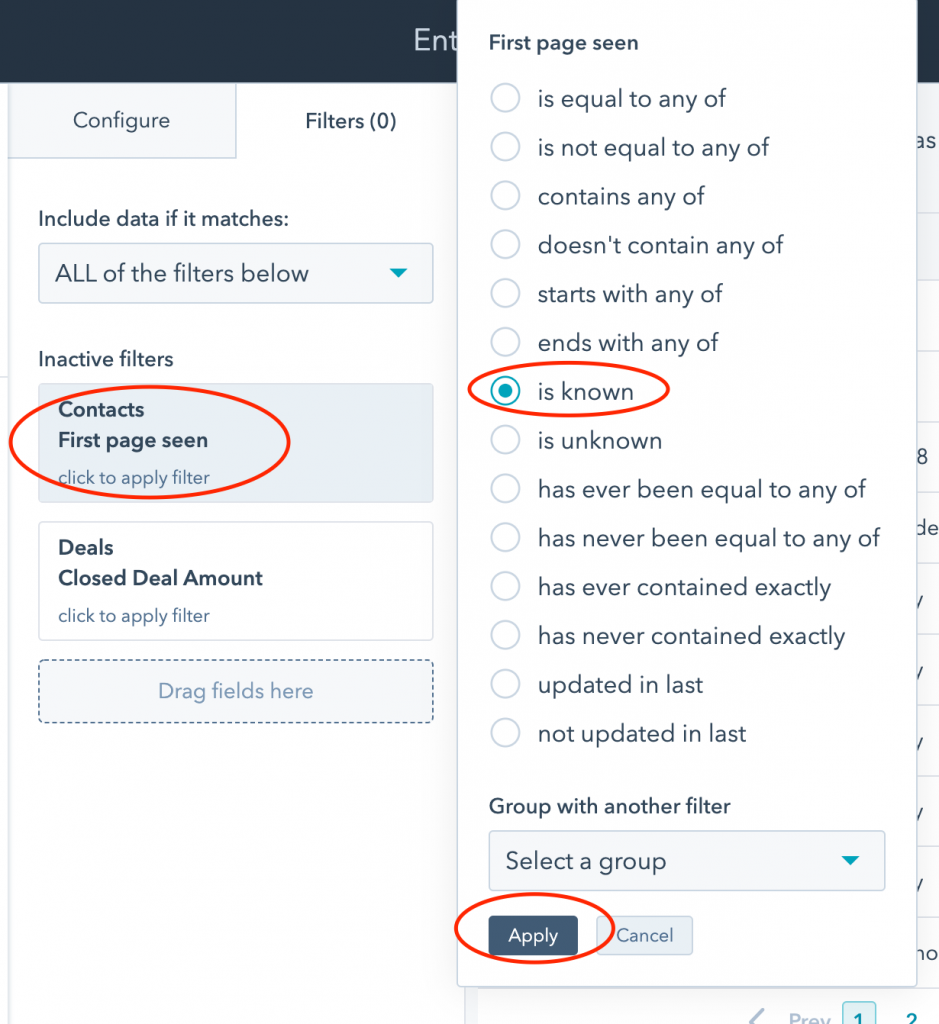
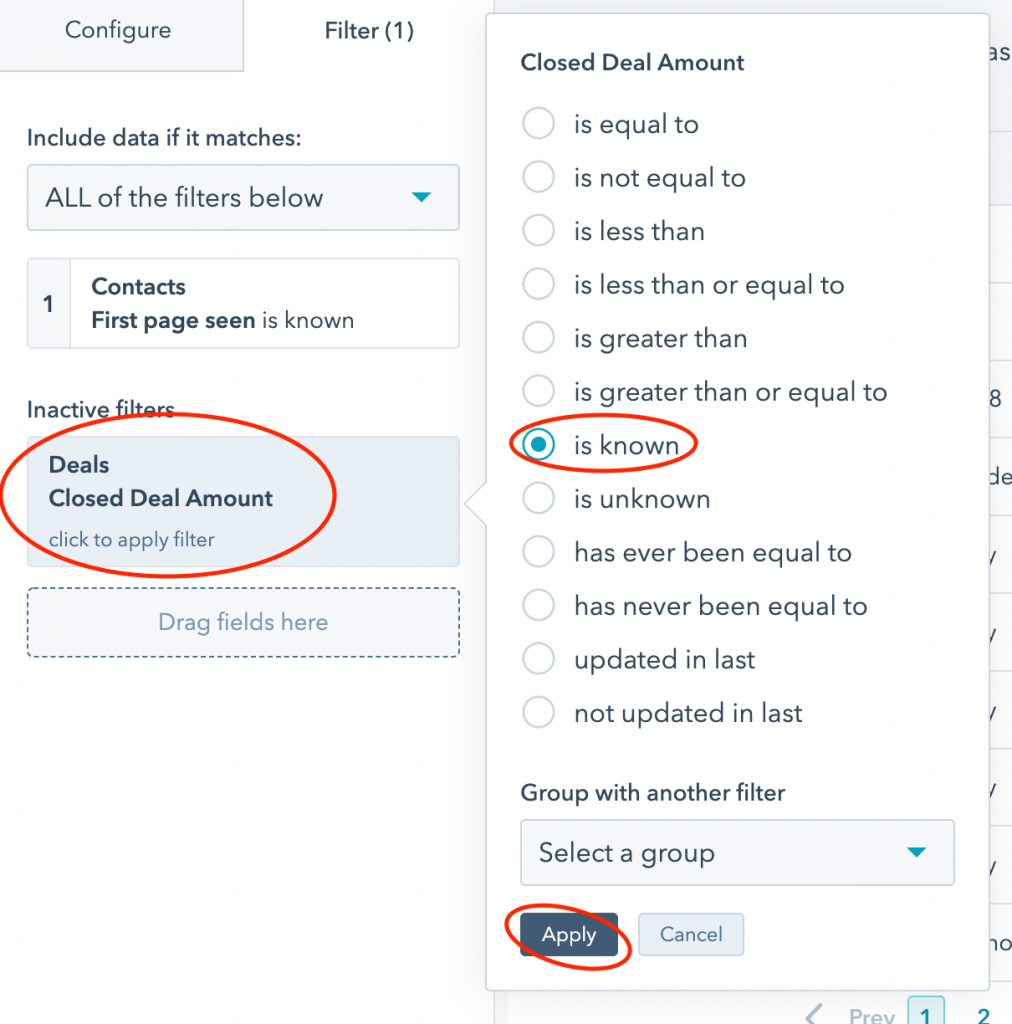
9. Before you hit save, here’s the important part – add “Deal stage” to your filter and add in all the deal stages that mean closed won for your business.

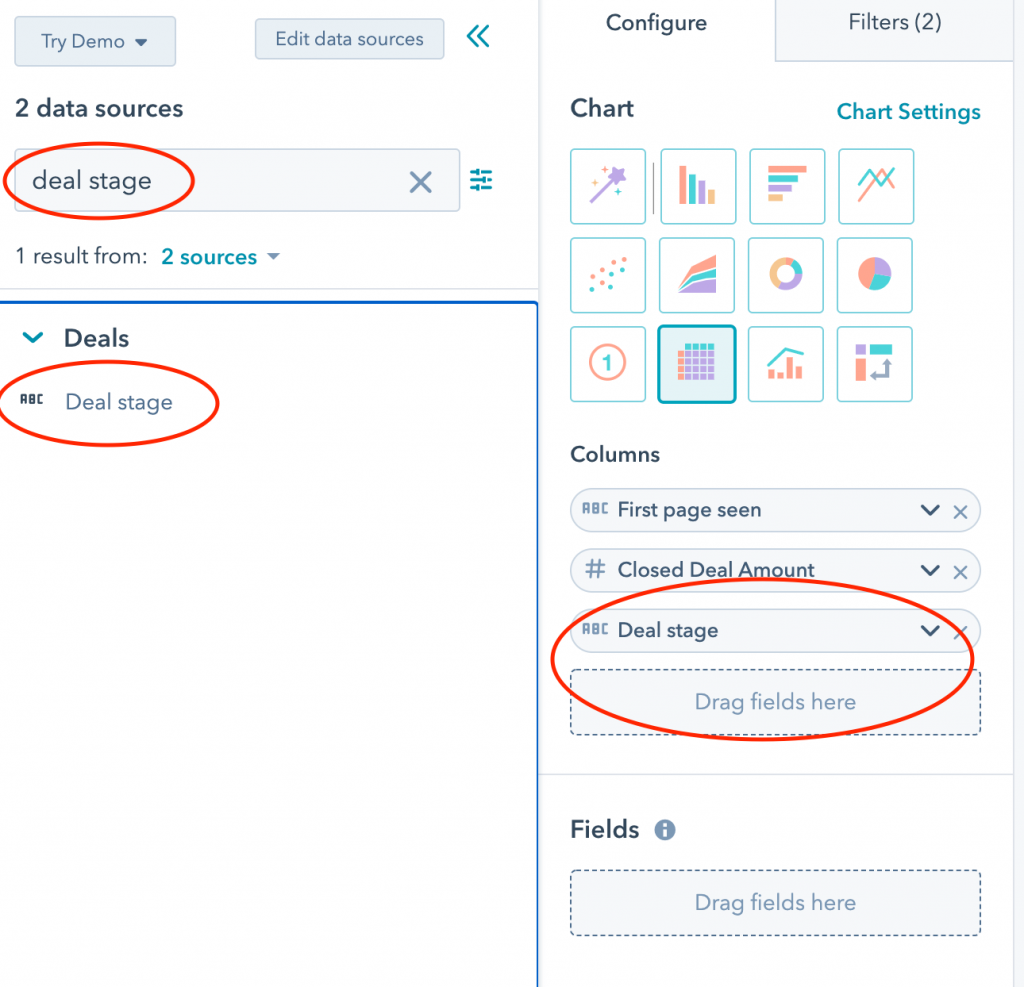
10. Click save and you’re done!
What if you don’t record revenue in HubSpot?
If you don’t record revenue in HubSpot you can follow all of the above steps but instead of using “closed deal amount” from step 6, we want to instead drag in “count of contacts” and “count of deals” in the column section. After this, you should follow the rest of the steps as presented above.

So, what’s next?
As you can see, measuring ROI on specific pieces of content can be extremely powerful for business and has many benefits.
There are so many steps involved. How can you get started?
- Pick a CRM software to use. If you’re not already using HubSpot, seriously consider it. Look into our Ultimate HubSpot Guide, our HubSpot Pricing Guide, and our HubSpot Alternatives Guide for reference so that you can make a decision.
- From your CRM software, install tracking code, capture contacts through native forms, and track sales deals and revenue.
- Follow the 10 steps we listed above to building your first report for measuring ROI from specific pieces of content.
And that’s it!
Do you need help with getting set up on HubSpot for your business? We offer packages to help your business get set up on HubSpot or coach you to do this yourself.




